SpaceX launches classified satellite for U.S. National Reconnaissance Office
Wednesday, 02 February 2022 19:52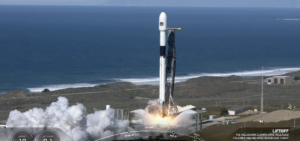
A SpaceX Falcon 9 launched a National Reconnaissance Office mission into orbit Feb. 2 from Vandenberg Space Force Base, California.
The post SpaceX launches classified satellite for U.S. National Reconnaissance Office appeared first on SpaceNews.
NASA and SpaceX investigating delayed Dragon parachute opening
Wednesday, 02 February 2022 15:57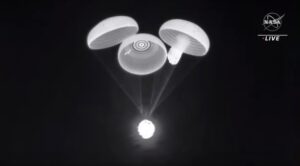
NASA and SpaceX are investigating the delayed opening of a parachute on a cargo Dragon spacecraft that recently returned to Earth, an incident similar to one that took place on a Crew Dragon spacecraft last year.
Incoming! Debris enroute to the Moon
Wednesday, 02 February 2022 14:00
The Moon is set to gain one more crater. A leftover SpaceX Falcon 9 upper stage will impact the lunar surface in early March, marking the first time that a human-made debris item unintentionally reaches our natural satellite.
Just add bubbles for cooler future spacecraft
Wednesday, 02 February 2022 14:00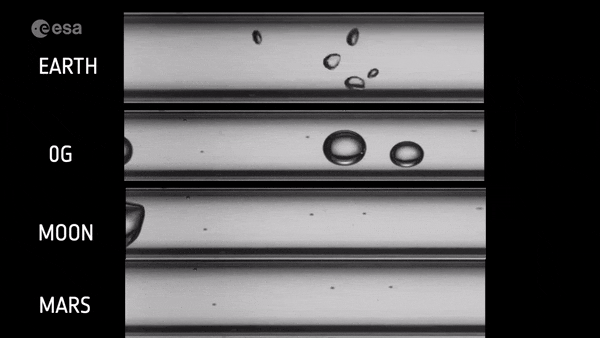
From soft drinks to hot tubs, people add bubbles to liquids for many different reasons. ESA engineers think bubbles produced at the verge of boiling point could help control the temperature of spacecraft in a more efficient and compact way. The main unknown is how bubbles will behave in differing gravities down to weightlessness, so researchers boarded parabolic flight aircraft for testing.
Astronomers lined up under an asteroid's shadow to measure its size precisely
Wednesday, 02 February 2022 12:26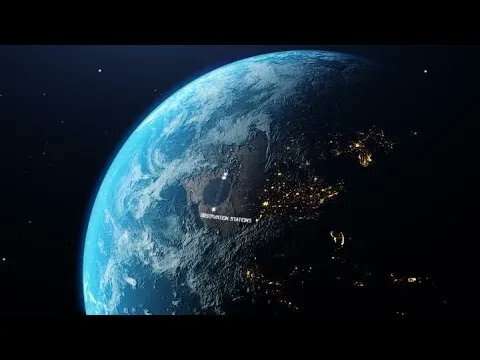
Astronomers will go to great lengths for science. Recently, dozens of astronomers had the misfortune of traveling to one of the most tempting locales in the southwestern U.S.—Las Vegas. But they weren't there for the city's bright lights—they were there to observe the very dim light of a star thousands of light-years away. And what they specifically wanted to see was the light from that star blink out for a few seconds. That lack of light provided the exact data they needed to help them determine the size of Eurybates, one of the Trojan asteroids that will be the focal point of NASA's Lucy mission.
What the scientists were looking for was an occultation. Most people know the most common form of this phenomenon—an eclipse. But occultations can happen with any background star and can be caused by any foreground object. Calculating where these minor occultations of stars by asteroids will occur takes a significant amount of orbital mechanics and processing power. The Earth itself has to be aligned correctly, and the asteroids and stars have to line up just right and be big enough.
A Chinese space tug just grappled a dead satellite
Wednesday, 02 February 2022 11:30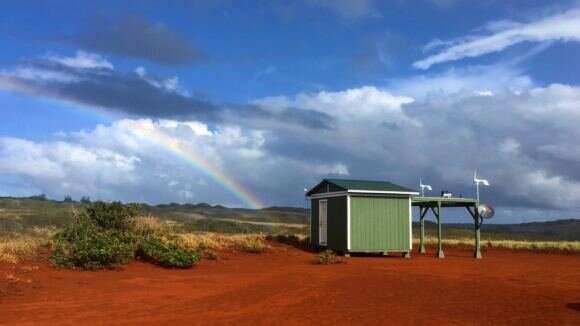
A Chinese satellite pulled a defunct navigation satellite out of the way of other satellites on January 22. The satellite, called SJ-21, appeared to operate as a space tug when it grappled onto the navigation satellite from the Chinese CompassG2 network. The operation details didn't come from Chinese authorities but from a report by ExoAnalytic Solutions, a commercial space monitoring company.
Chinese authorities are tight-lipped about the operation, but what can observations tell us about Chinese capabilities?
Earth's geosynchronous orbit is crowded, so on the face of it, having one less piece of space debris is a good thing for all satellite operators. But people can get suspicious when China does something like this.
GOES-T launch preparations underway
Wednesday, 02 February 2022 11:22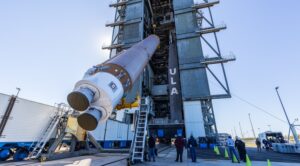
Preparations are underway for the launch of the next in a series of geostationary weather satellites that will also mark the end of a decades-long streak for one company.
The post GOES-T launch preparations underway appeared first on SpaceNews.
Roof of the satnav world
Wednesday, 02 February 2022 07:07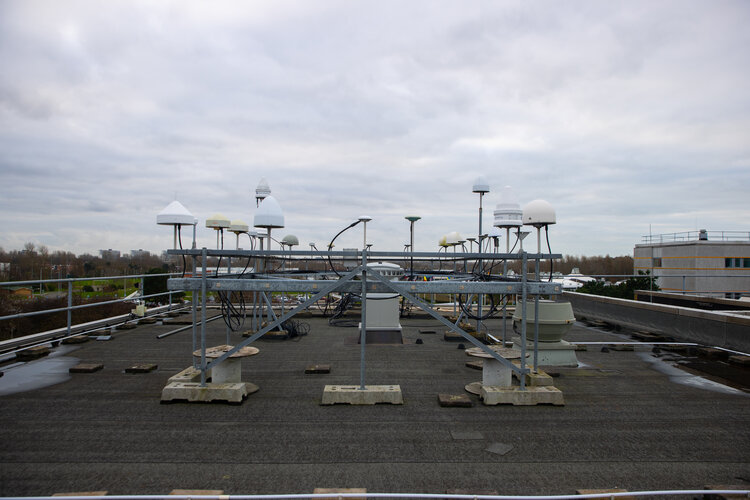 Image:
Roof of the satnav world
Image:
Roof of the satnav world Helicopters Flying at Mars May Glow at Dusk
Wednesday, 02 February 2022 04:55 The whirling blades on drones flying above Mars may cause tiny electric currents to flow in the Martian atmosphere, according to a NASA study. These currents, if large enough, might cause the air surrounding the craft to glow. This process occurs naturally at much larger scales on Earth as a corona or electrical glow sometimes seen on aircraft and ships in electrical storms known as Saint Elmo's
The whirling blades on drones flying above Mars may cause tiny electric currents to flow in the Martian atmosphere, according to a NASA study. These currents, if large enough, might cause the air surrounding the craft to glow. This process occurs naturally at much larger scales on Earth as a corona or electrical glow sometimes seen on aircraft and ships in electrical storms known as Saint Elmo's New Earth Trojan asteroid
Wednesday, 02 February 2022 04:55 An International team of astronomers led by researcher Toni Santana-Ros, from the University of Alicante and the Institute of Cosmos Sciences of the University of Barcelona (ICCUB), has confirmed the existence of the second Earth Trojan asteroid known to date, the 2020 XL5, after a decade of search. The results of the study have been published in the journal Nature Communications.
All cele
An International team of astronomers led by researcher Toni Santana-Ros, from the University of Alicante and the Institute of Cosmos Sciences of the University of Barcelona (ICCUB), has confirmed the existence of the second Earth Trojan asteroid known to date, the 2020 XL5, after a decade of search. The results of the study have been published in the journal Nature Communications.
All cele Chinese satellite reportedly grappled and moved spacecraft away from orbit
Wednesday, 02 February 2022 04:55 The event was discussed as part of a webinar on managing the risks of satellite close approaches in geostationary orbit, hosted by the Center for Strategic and International Studies and the Secure World Foundation earlier this week.
Last week, China reportedly demonstrated yet another advancement in space-based technology and capabilities as an analytics firm claimed to have seen a satelli
The event was discussed as part of a webinar on managing the risks of satellite close approaches in geostationary orbit, hosted by the Center for Strategic and International Studies and the Secure World Foundation earlier this week.
Last week, China reportedly demonstrated yet another advancement in space-based technology and capabilities as an analytics firm claimed to have seen a satelli D-Orbit merges with Breeze Holdings Acquisition Corp. to become Publicly Company
Wednesday, 02 February 2022 04:55 D-Orbit S.p.A., an Italy-based and market leading space logistics and transportation company, has announced that it will become publicly listed through a business combination with Breeze Holdings Acquisition Corp. (NASDAQ: BREZ), a publicly traded special purpose acquisition company. The transaction values the Company at an enterprise value of approximately $1.28 billion post-money.
In con
D-Orbit S.p.A., an Italy-based and market leading space logistics and transportation company, has announced that it will become publicly listed through a business combination with Breeze Holdings Acquisition Corp. (NASDAQ: BREZ), a publicly traded special purpose acquisition company. The transaction values the Company at an enterprise value of approximately $1.28 billion post-money.
In con UCF to lead $10m NASA project to develop zero-carbon jet engines
Wednesday, 02 February 2022 04:55 The University of Central Florida (UCF) is developing new technology that is expected to make airplane engines emission free, potentially revolutionizing the aviation industry.
UCF put together a team of experts and stakeholders to evaluate their innovation, which aims to not only make aviation fuel green, but also create engines and fueling systems that easily integrate into current airpo
The University of Central Florida (UCF) is developing new technology that is expected to make airplane engines emission free, potentially revolutionizing the aviation industry.
UCF put together a team of experts and stakeholders to evaluate their innovation, which aims to not only make aviation fuel green, but also create engines and fueling systems that easily integrate into current airpo Researchers achieve burning plasma regime for first time in lab
Wednesday, 02 February 2022 04:55 After decades of fusion research, a burning plasma state was achieved on November 2020 and February 2021 at Lawrence Livermore National Laboratory's National Ignition Facility (NIF), the world's most energetic laser.
Obtaining a burning plasma is a critical step toward self-sustaining fusion energy. A burning plasma is one in which the fusion reactions themselves are the primary source of
After decades of fusion research, a burning plasma state was achieved on November 2020 and February 2021 at Lawrence Livermore National Laboratory's National Ignition Facility (NIF), the world's most energetic laser.
Obtaining a burning plasma is a critical step toward self-sustaining fusion energy. A burning plasma is one in which the fusion reactions themselves are the primary source of China to improve space infrastructure with new satellites, technologies: white paper
Wednesday, 02 February 2022 04:55 China will continue to improve its space infrastructure, and integrate remote-sensing, communications, navigation, and positioning satellite technologies in the next five years, according to a white paper released on Friday.
The white paper, titled "China's Space Program: A 2021 Perspective", was issued by the State Council Information Office of China.
According to the paper, China w
China will continue to improve its space infrastructure, and integrate remote-sensing, communications, navigation, and positioning satellite technologies in the next five years, according to a white paper released on Friday.
The white paper, titled "China's Space Program: A 2021 Perspective", was issued by the State Council Information Office of China.
According to the paper, China w 